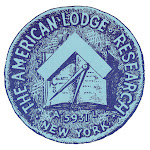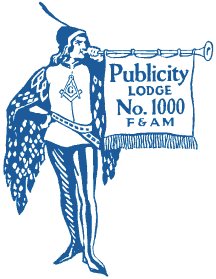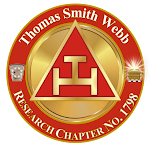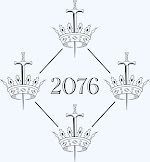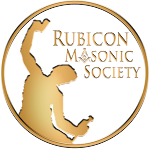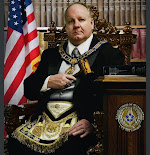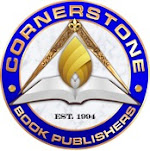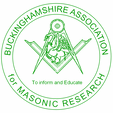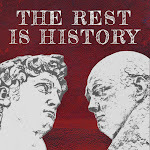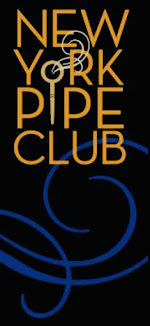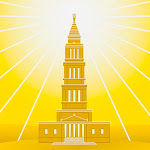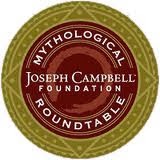RSVP on our Facebook page.
Wednesday, December 24, 2025
‘Grotto New Year’
Azim Grotto
The Handsomest Grotto
in the Realm
Trivia League
Wednesday, January 7 at 7 p.m.
43-50 12th Street
Long Island City
You are cordially invited to join Potent Monarch Joseph McMillen and the Prophets of Azim Grotto 7 at our first of many Lucky No. 7 Socials. We’ll kick off the new year in style as we display our trivia and imbibing expertise at Focal Point in Long Island City. Trivia starts at 7:30 p.m., so please be there by seven, at the latest, to make teams. Also, be sure to wear your fez!
RSVP on our Facebook page.
The Lucky No. 7 Socials will continue every month on the seventh. Subsequent locations to be announced. For example, February’s will be on the first Saturday at “Somewhere Warm. Or At Least Indoors.”
In recent news, we had our annual elections and installation of officers on December 7 at Tipsy Nomad on East 28th Street. Our new leadership is:
➣ Chief Justice Andrew Christopher Haight
➣ Master of Ceremonies Jason Cohen
➣ Venerable Prophet Victor Marshall
➣ Treasurer Steven J. Baker, PM
➣ Secretary Zachary N. Ostrow, PM
Congratulations all (especially to longtime Magpie reader Haight)!
There are appointed positions that are going unstaffed, I think because one must be present to be appointed, and getting to the annual meeting on a Sunday in December appears to be difficult for many. Attendance at these things often seems to be sparse. But I’m confident 2026 will be a grea…well, it’ll be a year!
It’s Christmas Eve! If you celebrate, I hope you can be with those who mean the most to you. Enjoy!
Sunday, December 21, 2025
‘Inside the new Philalethes’
The new issue of Philalethes (Vol. 78, No. 2 for those keeping count) is reaching mailboxes. It’s a good one! The three feature articles cover architecture, philosophy, and the term “free-born,” respectively.
I began my reading with that last one. W. Bro. Matthew Parker, of Craftsmen Lodge 314 in Nebraska, does us the service of clarifying a modern misconception concerning what it means to be “free-born.” Perhaps it’s a moot point now that nearly all of the fifty-one grand lodges (fifty states plus the District of Columbia) have established relations with Prince Hall Affiliated Masonry but, in the not distant past, a dishonest notion of being free-born kept black men from our lodges. The gist of it was neither a slave nor a descendant of a slave is free-born, and therefore is incapable of coming of his own free will, and ultimately is ineligible for the mysteries of Freemasonry. That actually persisted until recent decades.
Bro. Parker begins at the beginning, noting how the Halliwell (a.k.a. Regius) Manuscript from the 1400s introduces to the Masonic mind the condition of being free-born. It’s not philosophical, but is more of a practical way to run your business. That is, don’t apprentice someone who isn’t free because his owner might turn up at any time and drag him home. The idea was preserved in Anderson’s Constitutions, at which time the Trans-Atlantic slave trade thrived, and it lives in the verbiage we use in our lodges today.
But what is its value in these modern times? Parker says:
Why is it that the initiate (and indeed then the Apprentice and Fellow Craft as well) are esoterically asked as to their qualifications and birth status at each step, but are only exoterically asked once whether they’re doing so to gain anything? A man may become less worthy and well qualified as time passes, and his motives may certainly change, yet the answer to the question of being free-born is the only one that presumably cannot change between the degrees. We must consider that what we are asking—what we have always been asking—when we are asking if someone is free-born in our ritual is whether or not their motives remain pure. Our degrees are an initiatory experience, understood to philosophically reflect upon a man’s journey from life to death. We ask them before they are reborn not as a candidate but as a brother both esoterically and exoterically if they are seeking this rebirth for the correct reasons—whether they are controlled by another or are seeking only the mundane gains of the physical world.
W. Bro. Patrick Dey, of Nevada Lodge 4 in Colorado, looks into “The Primitive Hut: Architectural Theory in the Masonic Lectures.” In this essay, Bro. Dey quotes that line from the Middle Chamber Lecture (sorry, Pennsylvanians, but you’re not acquainted with this) about man first contriving shelter from inclemencies. This rude habitat sparked what became architecture. Dey’s point is this idea from the lecture originates in Marc-Antoine Laugier’s Essay on Architecture from 1753. Excerpted:
He begins [the Essay] with a romance on how all arts, and in particular architecture, are originally inspired by nature, and the original precedent always dictates what is good and right. He then examines a primitive man “without any aid or guidance other than his natural instincts” — a character that resembled Jean-Jacques Rousseau’s Émile, which is a clear opposition to the philosophy of Thomas Hobbes. (In general, the primitive hut as thought experiment is in opposition to Hobbesian philosophy). This “noble savage” first rests on a grassy bank beside a stream, which is at first comfortable until the noonday sun becomes too hot for him and he seeks shelter from the sun. He then finds shelter in the shade of a nearby forest and is then content until it begins to rain. Next, he seeks refuge from the storm in a cave, but this too proves uncomfortable owing to its darkness and foul air. Now fed up: “He . . . is resolved to make good by his ingenuity the careless neglect of nature. He wants to make himself a dwelling that protects but does not bury him. Some fallen branches in the forest are right material for his purpose; he chooses four of the strongest, raises them upright and arranged them in a square; across their top he lays four other branches; on these he hoists from two sides yet another row of branches which, inclining towards each other, meet at the highest point. He then covers this kind of roof with leaves so closely packed that neither sun nor rain can penetrate. Thus man is housed. [...] Such is the course of simple nature; by imitating the natural process, art was born. All the splendors of architecture ever conceived have been modeled on the little rustic hut I have just described.”
In conclusion, Dey says: “Though Masonry takes ‘first principle’ architecture from the Bible as its forms for the Lodge (the Temple or Tabernacle), the adoption of Laugier’s narrative in the Masonic lecture system endows the primitive hut as another form of ‘first principles’ in Masonry.”
Bro. Kyle Gamache, of Harmony Lodge 9 in Rhode Island, gives us “The Unity of Knowledge: Exploring Consilience in the Context of Masonic Philosophy.” He, inspired by Edward O. Wilson’s The Unity of Knowledge, a treatise that “describes consilience as the synthesis of knowledge,” wants us to see how Masonic thought is one system of organizing human knowledge “to connect with a universal truth about our world.” The Liberal Arts and Sciences are our guide into this process. Maybe you, like me, see it similarly, but didn’t know it had a name.
There is more to this issue of Philalethes, of course. A fitting tribute to the late Dick Fletcher, a review of Chris Ruli’s Brother Lafayette, and a notice encouraging us to seek the Early Texts of Freemasonry Seminar Series flesh out these pages.
In local matters, I remain interested in reviving Knickerbocker Chapter, the Philalethes Society’s New York City guild that went dormant years ago. Sorry to say I have been unsuccessful in finding another Mason who thinks this is a good idea, but a new opportunity has come up: Grand Lodge is compiling a directory of Masonic clubs.
 |
| Grand Lodge of New York |
Although Knickerbocker is theoretical, I’ll submit an entry with the hope that others will see it and want to be involved. It is not necessary to be a member of the Philalethes Society to take part in this chapter. We’ll see how it goes.
Friday, December 19, 2025
‘Sommers is 2026 Sankey Lecturer’
 |
| Click to enlarge. |
This just in: Next year’s Charles A. Sankey Lecture at Brock University will bring Dr. Susan Mitchell Sommers back to the lectern.
I won’t bother typing all the information you see in this graphic, but instead will encourage you to attend, whether in person or by streaming.
I assume this lecture will be similar to what Professor Sommers presented this year at the John Skene Masonic Conference in New Jersey. (I’ll tell ya, if ever you want to feel comically redundant on the Masonic lecture circuit, feel free to insinuate yourself, with your average—at best—research and speaking skills, into a program alongside Professor Sommers and Bro. Bob Cooper. That’s what I did four months ago. Mortifying. I’ll recap the Skene Conference before the end of the month in my continuing “What I Did on My Summer Vacation” blogging.) She rendered quite a biography of James Anderson—you think you know a guy!—linking the mortal, fallible man to a dispassionate understanding of his Constitutions. This was excerpted from her upcoming book on Anderson.
From the publicity:
This annual lecture series is named in honor of RW Bro. Charles A. Sankey (1905-2009) and is part of the partnership between the Grand Lodge of Canada in the Province of Ontario and Brock University.
This partnership began with the initiative of Heritage Lodge 730 to support and maintain the Masonic collection in the James A. Gibson Library, and continuing with the posting online of the Proceedings of Grand Lodge from 1855 to 2010.
Dr. Sankey served as Chancellor of Brock University from 1969 to 1974. A renowned Masonic scholar, he was active in all the concordant bodies of Masonry including the Ancient & Accepted Scottish Rite, the Royal Order of Scotland, and Royal Arch Masonry. His extensive collection of rare Masonic books and papers is in the Special Collections of the James Gibson Library at Brock, providing a rich resource for research scholars.
This partnership began with the initiative of Heritage Lodge 730 to support and maintain the Masonic collection in the James A. Gibson Library, and continuing with the posting online of the Proceedings of Grand Lodge from 1855 to 2010.
Dr. Sankey served as Chancellor of Brock University from 1969 to 1974. A renowned Masonic scholar, he was active in all the concordant bodies of Masonry including the Ancient & Accepted Scottish Rite, the Royal Order of Scotland, and Royal Arch Masonry. His extensive collection of rare Masonic books and papers is in the Special Collections of the James Gibson Library at Brock, providing a rich resource for research scholars.
So, we have three months advance notice to set aside a little time on a Sunday afternoon but, if you miss it, catch it on YouTube later.
Wednesday, December 17, 2025
‘Patria, Honor y Gloria’
You know Dia de Duarte is January 26, the birthday in 1813 of Bro. Juan Pablo Duarte, founding father of the Dominican Republic, and now you’ll know how Juan Pablo Duarte Lodge 1195 has a great evening planned for next month, just two days before the holiday. From the publicity:
Juan Pablo Duarte:
Patria, Honor y Gloria
Saturday, January 24
Masonic Hall
$65/person here
It is with great pride that the Brethren of Juan Pablo Duarte Lodge 1195 extend to you a heartfelt invitation to join us for a historic evening of culture, reflection, and brotherhood. On Saturday, January 24, we will host “Juan Pablo Duarte: Patria, Honor y Gloria,” a tribute to the founder of the Dominican Republic and a celebration of the ideals of freedom and dignity that unite us all.
🇩🇴 Location: Masonic Hall (71 West 23rd Street), French Ionic Room on the tenth floor.
🇩🇴 Featuring: a dramatic monologue by the acclaimed Angel Candido, plus historical readings, folk dancing, food, raffles, and more.
🇩🇴 Contribution: $65 per person (a portion of which will support our charitable works).
🇩🇴 Attire: Formal.
The next time you’re down by Canal and Sixth, make a point of visiting our historic brother at Duarte Square, where stands a 10-foot, 6-inch bronze of this hero of the Americas. Donated by the Dominican government and erected January 26, 1978, Nicola Arrighini’s sculpture depicts Duarte seemingly vigilant at the beginning of the Avenue of the Americas.
Saturday, December 13, 2025
‘Christmas concert in Manhattan’
Bro. Erik Carlson, star organist for a number of lodges at Masonic Hall, will conduct the choir and orchestra next Friday at the Church of Our Lady of Good Counsel-St. Thomas More.
A program of Vivaldi, Vaughan-Williams, and Purcell awaits you at a concert ideal for enjoying Christmas in New York. The church is located at 65 East 89th Street, between Madison and Park, in Manhattan.
A fresh snowfall, but not too much, would make it perfect.
Wednesday, December 10, 2025
‘Lodges unite for Burns Supper’
 |
| Click to enlarge. |
The graphic above has all the information currently available (tickets not yet on sale), but I’m going!
 Robert Burns, Scotland’s most beloved historic Freemason, was born January 25, 1759. Among his most famous works is “A Man’s A Man for A’ That,” wherein he speaks of virtues in terms every Mason can understand—despite the Scots Gaelic tongue! It is dated 1795, the year before his death at age 37.
Robert Burns, Scotland’s most beloved historic Freemason, was born January 25, 1759. Among his most famous works is “A Man’s A Man for A’ That,” wherein he speaks of virtues in terms every Mason can understand—despite the Scots Gaelic tongue! It is dated 1795, the year before his death at age 37.A Man’s A Man For A’ That
by Robert Burns
Is there for honest poverty
That hangs his head, an’ a’ that
The coward slave, we pass him by
We dare be poor for a’ that
For a’ that, an’ a’ that
The rank is but the guinea’s stamp
The man’s the gowd for a’ that
What though on hamely fare we dine
Wear hoddin grey, an’ a’ that
Gie fools their silks, and knaves their wine
A man’s a man, for a’ that
For a’ that, an’ a’ that
Their tinsel show an’ a’ that
The honest man, though e’er sae poor
Is king o’ men for a’ that
Ye see yon birkie ca’d a lord
Wha struts an’ stares an’ a’ that
Tho’ hundreds worship at his word
He’s but a coof for a’ that
For a’ that, an’ a’ that
The man o’ independent mind
He looks an’ laughs at a’ that
A prince can mak’ a belted knight
A marquise, duke, an’ a’ that
But an honest man’s aboon his might
Gude faith, he maunna fa’ that
For a’ that an’ a’ that
Their dignities an’ a’ that
The pith o’ sense an’ pride o’ worth
Are higher rank that a’ that
Then let us pray that come it may
(as come it will for a’ that)
That Sense and Worth, o’er a’ the earth
Shall bear the gree an’ a’ that
For a’ that an’ a’ that
It’s coming yet for a’ that
That man to man, the world o’er
Shall brithers be for a’ that
Sunday, December 7, 2025
‘Happy birthday to Civil War Lodge 1865’
I enjoyed the weekend with Civil War Lodge of Research 1865, which marked its thirtieth anniversary, in Virginia.
 |
| The East of the lodge room. |
CWLR is one of six(!) research lodges in the Commonwealth, having been set to labor on November 14, 1995 with Allen E. Roberts as its inaugural Master. We met Saturday at Babcock Lodge 322 in Highland Springs; this lodge building is the home of this research lodge, although CWLR travels about and outside Virginia in pursuit of its research into Freemasonry’s connections in the history of the War Between the States.
Membership in CWLR is open to Masons outside Virginia—ergo my presence—which makes for a diverse group (with sometimes a babelic approach to ritual!), but also can inhibit attendance due to the cable tow’s limits. So, for our anniversary celebration, I thought participation wasn’t what it should have been, although we elected four to membership—one of whom, Bro. Michael, immediately joined the officer line as a Steward!
 |
| A close-up of that photo of CWLR’s founders. Sorry for the glare. |
No papers were presented yesterday, but we installed our officers for 2026. Bro. Bill Hare of Maryland is our new Worshipful Master. Our new Wardens are RW Clifton White in the West, and Bro. Alan Hawk, of Maryland, in the South. In addition, Secretary Bennett Hart was invested with his jewel and warrant of office as the new DDGM of Grand Lodge’s Research District. (With six research lodges, it makes sense to organize them into a district.) Yours truly even had a small role as I served as the proxy for the installation of Bro. Gary Laing, of Delaware, as Tyler. The installation was conducted by Past (1997) Grand Master Alan Adkins, with the help of Bro. Keith Hinerman (our second WM back in 1996) and RW Hart.
Get well wishes to outgoing WM Creighton Lovelace, of North Carolina, who, with his wife, is out of commission due to COVID.
Civil War Lodge’s next communication will be a little different. On Saturday, April 11, we will open at Magnetic Lodge 184 in Stanley, Virginia; then visit New Market Battlefield; and then close at a second lodge (yet to be determined). We’ve been assured this can be done legally, even if it is odd.
Babcock Lodge’s home is a venerable Masonic temple in a residential neighborhood. Bro. Keith showed me around after discovering me inside the library. The main section of the building went up in 1914 and an addition in ’64. For whatever reason, it was easy for me to sense the memories of past glories inside. You can just tell there were momentous memorable occasions there—whether Masonic meetings and affairs or community gatherings. When I came to the door overlooking the parking lot, I half expected to see it full of early sixties Fords and Chevys. I’m sorry to report the lodge is nearing the end of life. There are too few members, many of whom are past age seventy, and there is real talk of selling the property. A sign of the times.
 |
| Souvenirs! |
He is shown here in a painting that hangs inside the lodge room. When Babcock vacates the premises, I hope the portrait finds a new home.
 |
| Where the Confederate fortifications stood at the Battle of Cold Harbor. |
After lodge, we visited Cold Harbor, a nearby National Battlefield Park. I got separated from the group, but I followed behind through the three key stops at the site. In late fall, with leaves covering the ground, there isn’t much to look at, frankly, and the dreary raw weather made it more drab. What impressed me is the small space. To think tens of thousands of soldiers blasted each other to pieces here—the Union side lost 12,000 men—is incomprehensible. I’m sure the present day park is much smaller than the land where they fought, but the preserved battleground looks like it could fit in a small college campus. Read some of the details here.
Yesterday was a long day, with brethren arriving at the lodge at eight in the morning and leaving the battlefield site at 3 p.m., so I wasn’t surprised to find myself alone at the restaurant at dinnertime. The food at Mexico in Sandston was okay. I had “street tacos” (steak) and a grande glass of cerveza (Dos Equis Amber). The group dinner Friday night at Roberto was far superior, especially for those of us who ordered the ribeye. Everything for the weekend—the hotel, the lodge, the restaurants, the historic site—are in close proximity and very easily reached, even for me with my ignorance of the area and poor sense of direction.
Bro. Keith gave me the gift of a copy of The Diamond Years, one of many inventoried in Babcock’s library. If you’re a Masonic history buff, you have encountered author Allen Roberts’ approach to historiography: kind of like playing noncompetitive darts. Here is one of his gems, found on Page 157:
 |
| Yikes. |
Keith also sent me home with a copy of Emessay Notes from June 2018 which tells of MW Dwight Smith, Grand Master in Indiana in 1945. Assuming I’d never heard of Smith, Keith enjoyed telling me about him. Usually terrible at sober conversation, I had fun reciprocating by telling Keith a little about the Knights of the North and our cultic devotion to Smith and his writings.
In related news, the Magpie Mason congratulates Bro. Andy Martinez of Maryland, who served as Master of CWLR for the 2020 and 2021 terms, upon his election as Worshipful Master of Maryland Masonic Lodge of Research 239. (Honestly, I thought I was the only one weird enough to serve in the East of two research lodges!) No word yet on a date of the installation, but I think it might be Saturday, January 17.
Thursday, December 4, 2025
‘Sorcery in a research lodge and gobo on a temple’
 |
GL of Pennsylvania The Masonic Temple in Philadelphiaaglow in Eagles green. |
If you find yourself in or near Philadelphia next Tuesday at five in the afternoon, get over to 1 North Broad Street to see the Masonic Temple’s public lighting ceremony.
From the few photos shared on social media this week, the temple’s new exterior lights look beautiful. “Let there be Light” and, with modern diode and gobo technologies, color and shape possibilities abound.
Grand Master Larry Derr and others will offer remarks before throwing the switch. Masons, our families, and the public are invited.
Looking ahead to the weekend, Pennsylvania Lodge of Research will meet at the far away Scottish Rite of Harrisburg. That’s Saturday the 13th at 10 a.m. From the publicity:
Program:
25-year gavel presentation by Bro. S. Eugene Herritt, RWPGM
“A Very Queer Sorcery: The Anti-Masonry of James Shelby Downard” by Bro. J. Leavitt Pearl
Lunch will be available ($20) after the meeting.
2701 North Third Street, Harrisburg.
Tuesday, December 2, 2025
‘Anti-Masonry roundtable next month’
I guess it’s okay to look into 2026 for upcoming events, and Alpha Lodge 729 in Ohio has something very promising planned for next month. From the publicity:
Anti-Masonic Round Table
Saturday, January 31
Alpha Lodge 729
Kettering, Ohio
$10 tickets here
Join MW Bro. Bill Carter, PGM for this riveting discussion on the anti-Masonic movement and how to turn it around. A boxed lunch will be offered for $10. Only 100 tickets will be offered, so don’t miss out.
“How to turn it around” intrigues me. Without a doubt, 2026 will be an apt occasion to discuss anti-Masonry*, as it will be the bicentennial year of the William Morgan debacle in New York, and the resulting scandal, political upheaval, and near collapse of the Masonic Order in the Northeast. Anti-Masonry will be with us always, thanks to the grifters, religious dingbats, and low IQ clods who come away from some YouTube video thinking they know more about Freemasonry than you, and I don’t see how that can be overcome. There are reasons Masonry transcends ignorance.
The roundtable is too far a drive for me, but if you’re in the area, check it out. Master Masons only.
*Look for the Magpie Mason at the September communication of New Jersey Lodge of Masonic Research and Education 1786 when I’ll discuss the Anti-Masonic Party’s progress in that state during the 1820s and ’30s.
Wednesday, November 26, 2025
‘The Revolution was televised’
 |
| The Petition by John Ward Dunsmore, oil on canvas, 1926. On exhibit in Washington’s Headquarters Museum in Morristown. |
If you sneeze, you’d miss it, but there is a reference to Freemasonry in the recent Ken Burns documentary after all.
The American Revolution was broadcast on PBS last week, and I finally caught up to the closing episode, titled “The Most Sacred Thing (May 1780 – Onward),” today. The longest of the six parts, this chapter extends briefly beyond the Treaty of Paris to place the Constitution and the Bill of Rights in relation to the war.
Freemasonry is not spoken of. It is neither in the narration, nor the voice-acting, not even in any interview. It’s visual and quick. And a non-sequitur.
At the 35:06 mark, while the narrator explains a mutiny on January 1, 1781, when approximately 1,500 Continental soldiers from Pennsylvania, encamped near Morristown, New Jersey, rebelled over their typical meager living conditions and non-existent pay, we see a Worshipful Master in the East. The disgruntled troops aimed to march on Philadelphia “to confront Congress with their grievances.” They had six artillery pieces. Wisely, the Pennsylvania legislature acted first and agreed to most demands, particularly the back pay, and this rebellion within the Revolution was quelled.
I don’t know how John Ward Dunsmore’s painting, The Petition, was chosen to be the wallpaper during the telling of this bit of history. I wonder if there had been a minute devoted to Freemasons’ Revolutionary significance that was omitted for time, and this 18-second panning out shot of the painting was the only aspect to survive the editing.
 |
| revolutionarywarnewjersey.com |
 |
| Detail of The Petition. Click to enlarge. |
The initiated eye will discern immediately this is a Masonic meeting. Worshipful Master Jonathan Hart is clearly seen seated in the East with the Master’s jewel about his neck. The Three Great Lights and Three Lesser Lights are in place, and the altar even seems to be the right size and shape for the period. George Washington is shown in profile seated in the north. He is known to have attended American Union in Morristown that day. (Click here if you have time.)
As a historical reference, The Petition is annoying as it depicts Alexander Hamilton and others who were not Masons in the scene, but, again, Dunsmore painted this in 1926, a time of great national patriotism in the country’s sesquicentennial year. The artist may have believed or hoped Hamilton and the others were Brothers. Masonic researchers then were even more rare than they are today, so there were too few sources of accurate information.
This is not the incorporation of Masonic history in this documentary I had hoped for, but it’s better than nothing, and there ought to have been something. I enjoyed the series overall, despite some errors and omissions.
Click here for an introduction to this subject.
The Petition can be viewed in person in the Morristown National Historical Park’s museum, inside the Revolutionary Room of the Washington’s Headquarters Museum (the Ford Mansion), at 30 Washington Place. It is on indefinite loan from the New-York Historical Society.
And American Union Lodge? Yes, it is still at labor! It meets at Marietta, Ohio and will celebrate its own 250th anniversary in February. I’ll be there, and hope to see you.
Sunday, November 23, 2025
‘Breakfast with the research lodge’
 |
| Uniform typical of Capt. John Ross’ company, Third New Jersey Regiment, commanded by Col. Elias Dayton. |
The next meeting of New Jersey Lodge of Masonic Research and Education 1786 is less than three weeks off. We’ll get together in Freemasons Hall in North Brunswick for a hearty Saturday breakfast and a somewhat truncated Regular Communication. (I think everyone will want to get on the road because of the many lodge installations that day.) From the publicity on Faceypage:
Saturday, December 13–The Worshipful Master will discuss “The Upcoming 250th, Or Putting the American Revolutionary War into Context.”
This will not be a recitation of the war’s events. Rather, we will go into the war’s origins, its historiographical background, and some different ways to study, understand, and appreciate it.
The talk will wrap up with Don’s current personal research on four Continental Army veterans and Freemasons from New Jersey: James Giles, Joseph Bloomfield, Richard Howell, and Andrew Hunter, Jr.
Business will include an update on the new website, and a recap of the John Skene Conference. Your 2026 dues payments will be accepted. Instead of a luncheon, we will gather at the lodge for breakfast.
 |
| Period painting of New Jersey militia man. Provenance unknown. |
So, that’s breakfast at 8:30 a.m. and the meeting at 9:30. Master Masons are welcome. Attire: suit & tie, plus apron.
Saturday, November 22, 2025
‘Visiting Quinta Essentia 500—and The Owl Shop’
 |
| ‘Brethren, be clothed.’ |
Before the meeting last Saturday of Quinta Essentia Lodge 500 recedes into foggy forgetfulness, let me share a few details of a fantastic evening in New Haven.
 |
| No nightmares in The Elm City Club on Elm Street. |
I have wanted to get up there for a visit for a number of years. I met Bro. Jay at his home in the northeast corner of New Jersey and he did the driving—kind of a haul, actually—into Connecticut. The lodge meets inside The Elm City Club, a private, members-only establishment that originated, if I understand correctly, as the Graduates Club, a social space for Yale University people. Located on Elm Street, it is situated in the center of the campus area. Elm City is New Haven’s nickname.
The plan was for the lodge to meet, close, and then have dinner in the same room, but signals got crossed and we dined in a larger space that surely was the more comfortable option—although it was weird having the wait staff circulating about while our speaker was presenting. The lodge meeting was brief. Quinta Essentia gained one more brother, as Bro. Rodney, Master of Shakespeare Lodge 750 here in Manhattan, was elected to membership. Huzzah! (They employ a unique method of balloting, involving two ballot boxes, that I’ve never seen before.)
After the meeting, we enjoyed cocktails and a fine social hour together during which selected brethren proposed toasts to the six Masonic credos shown in the blue circle on the coin below. While the Magpie Mason drew Enlightenment, I was preempted by another brother who accidentally spoke on that subject before it was my turn. He did a better job anyway.
 |
| Worshipful Master Jonathan Glassman’s commemorative coin is a hefty two inches in diameter and about a pound and a half in weight. |
Our keynote speaker was Chris Murphy of Vermont, who presented “The Traditional History: Freemasonry’s Foundational Mythos.” I envy gifted speakers, and Bro. Chris has the talent that eludes me. I didn’t take notes, but this was an explanation of how and why the Masonic Solomon’s Temple is not the same story as that found in the Bible. Our story differs and has many details, as you know, that are not Scriptural. I wouldn’t want to divulge too much here, but my take in one sentence: While we today do not accept the histories rendered in the Old Charges and by Anderson as accurate records, we should appreciate speculatively about how a Masonic DNA, divinely placed, nevertheless connects Adam to us. Just terrific!
Chartered in 2012, Quinta Essentia 500 is an Observant lodge. Read about that here.
 |
| History in a tobacconist. 268 College Street. |
Before arriving at The Elm City Club, Jay and I visited The Owl Shop, the storied tobacconist and bar on College Street that also has been on my list of places to be. I’ve seen Life magazine photos on the web of Yale men at their pipe club and of tobacco tins displaying the Yale “Y,” and this establishment, which opened in 1934, is connected to those. They sell cigars, naturally, and the air inside was thick with smoking aroma. But it wasn’t hazy and oppressing. Two days earlier, I caught the new Linklatter film. In it, the lyricist Lorenz Hart (Ethan Hawke) exclaims he loves the smell of cigar stores, and the environment of The Owl Shop undoubtedly is the kind of thing he’s talking about.
 |
| Whatever air cleaner they use is inconspicuous. Only the ceiling fans are obvious. Great place to relax, smoke, and drink. |
We sat down, had a round of drinks (I enjoyed a Warsteiner Dunkel while Bro. Jay was fortified by a reddish tea), and shared a cheese board. No smoking, as time didn’t permit it, but I purchased an ounce of Harkness Tower, their Balkan house blend, to bring home. I’m going to try some tomorrow.
 |
| An ounce of Harkness Tower to go. |
 |
| During the holidays, I’m going to try this rye. 100 proof! Zoinks! |
A great way to spend a Saturday! Unfortunately, New Haven really is just far enough away to not be a place to frequent, but, edified by this experience, I don’t know why I wouldn’t visit the lodge and smoke shop at least once a year.
‘Recap of the researchers conference’
I’m still catching up on What I Did on My Summer Vacation blogging and, since it’s been two months already, let me report on William O. Ware Lodge of Research’s long anticipated “Exploring the Role of Masonic Research Lodges in the 21st Century” conference in Lexington, Kentucky nine Saturdays ago. Produced with the assistance of Lexington Lodge 1, the Rubicon Masonic Society, the Philalethes Society, and others, this day of panel discussions addressed six topics that mostly were for consideration of the future of these peculiar lodges we love so much.
New Jersey Lodge of Masonic Research and Education 1786 was represented by Bro. Sal Corelli and myself. (He and I had been bumping into each other all summer, first at the Masonic Restoration Foundation in Ontario, then the John Skene Conference, and again in Kentucky.) I guess I was representing The American Lodge of Research and Civil War Lodge of Research also.
 |
| The banquet room. |
The night before the conference, we gathered at Spindletop Hall for Rubicon’s Thirteenth Annual Festive Board. We guests were sad to hear how keynote speaker John L. Cooper, Past Grand Master of California, wouldn’t be joining us, but our hosts adroitly surrogated MW David Cameron of Ontario. He presented a most encouraging talk—a true story of his lodge’s efforts to prove the provenance of a cherished gavel gifted by Rudyard Kipling. I am kicking myself now because I didn’t take notes. Seating was crowded in the banquet room and I wasn’t planning on continuing all this blogging, so I ruled against pressing my notebook into my salad and elbowing my unlucky neighbor to the right while jotting down details. Nor did I shoot photos.
 |
| MW David Cameron |
The Festive Board was enthralling. Not everyone knows how to do this but, believe me, if every lodge hosted a monthly Festive Board of this excellence, any worries of membership retention would dissolve. Great food, the toasts, the Good Fire ritual, the songs, the fellowship, prayer, the chain of union are ingredients of a cheerful time together that only can inspire more time together.
 |
| Rubicon Masonic Society |
The following morning, back at Spindletop Hall, was the conference. To ease everybody into the forward-leaning subjects, Bro. S. Brent Morris led the first talk, “The Historical Role of Research Lodges & Societies: Lessons from the Past.” It was a comprehensive review. Since you are reading this, I trust you have some knowledge of the history and purposes of research lodges—how Quatuor Coronati 2076 in London was the first and was devoted to debunking the myths and legends that long had passed for Craft history, followed by a few others in England and Ireland, and then several in the United States in the 1930s. The newest, I assume, is Virginia’s Blue Ridge Lodge of Research 1738, set to labor several months ago. I’ll omit all that chronology and instead highlight something he said about some of our earliest literature being expressions of historiography. We’ve all read Rev. James Anderson’s take on Masonic history in his 1723 book The Constitutions of the Free-Masons, and probably all scratched our heads wondering how anyone could begin Freemasonry’s story with Adam, the first man, but that, after all, is one understanding of our history, demonstrating a desire for insights into our past at the start of the grand lodge era.
Session Two brought Bro. David L. Daugherty to the lectern to discuss “Bridging the Gap: Connecting Research Lodges with Regular Lodges.” Daugherty, of Ohio Lodge of Research, wanted us to understand how research is not necessarily education. The former, he says, concerns gaining understanding, and the latter is about sharing. (New Jersey’s lodge is named Lodge of Masonic Research and Education.) Do research lodges have a responsibility to build fundamental understandings for all Masons? He noted how some research lodges have warrants that allow them to travel about their jurisdictions. Audience member Bro. James Buckhorn of Indiana said his grand lodge gives new Master Masons a year’s free membership in their lodge of research. (Something other research lodges should emulate?) “We need to become better educators,” Daugherty said in encouragement. Perhaps that will guarantee the future of research lodges and grand lodges.
 |
| MW David Cameron of Ontario. |
Bro. David Cameron, Past Grand Master of the Grand Lodge of Canada in the Province of Ontario, moderated the next discussion on “Modernizing Masonic Research: Embracing Technology and Digital Tools.” Tech is not my thing, to put it simply, so I was relieved to hear the talk was in language I understood. Cameron urged us all to spend the necessary funds to digitize our research and make it available on the web. Bro. Buckhorn reminded us that digital data are not the ultimate answer some may think, because data can be saved with technologies that inevitably will become obsolete, therefore inventorying physical documents is a must. The platform TeamReach was praised. Bro. Adam Kendall, the new Senior Warden at QC2076, summarized Artificial Intelligence thusly: “A.I. is a shrimp trawler. It scoops from the bottom of the ocean.” Take heed.
For Session Four, Bro. Rich Hanson led us in conversation of “Relevance in the 21st Century: Addressing Contemporary Issues Through Masonic Research.” This was one I dreaded somewhat, having seen “researchers” cherry-pick Masonic historical notes to vindicate their personal politics. (By contrast, when I delve into our past, I’m not above smoking a clay pipe while wearing a yellow jacket and blue breeches.) But my fear was unfounded. Hanson spoke of research lodges as places for sociology where our work might find alignment with today’s issues outside the temple. The goal would be to gain understanding of young people so that Freemasonry might serve the next generation, rather than allow a demographic fate run its course.
 |
Rubicon Masonic Society Bro. Adam Kendall of QC2076, Philalethes, SRRS, etc. fame. |
Next, Bro. Kendall had his own subject to moderate: “The Art of Masonic Research: Developing and Sharing High Quality Work.” Adam should know. As editor of Heredom, a Blue Friar, an author of masterpiece papers, president of Philalethes, and an Honorary Member of Rubicon, he spoke firmly of best practices in conducting research and in writing and presenting research. Objective quality-control, passion, and the “Five C’s of Historical Thinking”—Causality, Change Over Time, Complexity, Context, and Contingency—are secrets to good work, square work.
 |
| Bro. Andrew Hammer |
After the conference, the Magpie Mason was invited to dine at the Lexington Club. Feeling like a pair of wet Chuck Taylors at a white tie affair, I nevertheless enjoyed an outstanding meal and conversation with the principals of the Rubicon Society and stars of the conference.
My deep thanks to Bro. John Bizzack, Master of W.O.W.; to Bro. Dan Kemble, the lodge’s Chaplain; to Rubicon Chairman Brian Evans; and to all who made the amazing weekend possible.
Finally, for more on the conference from its participants, just click the image at top. Also, a census of Masonic research lodge Masons is available for your consideration. I’m one of the team that’ll crunch the data, so please participate here.
Subscribe to:
Comments (Atom)





